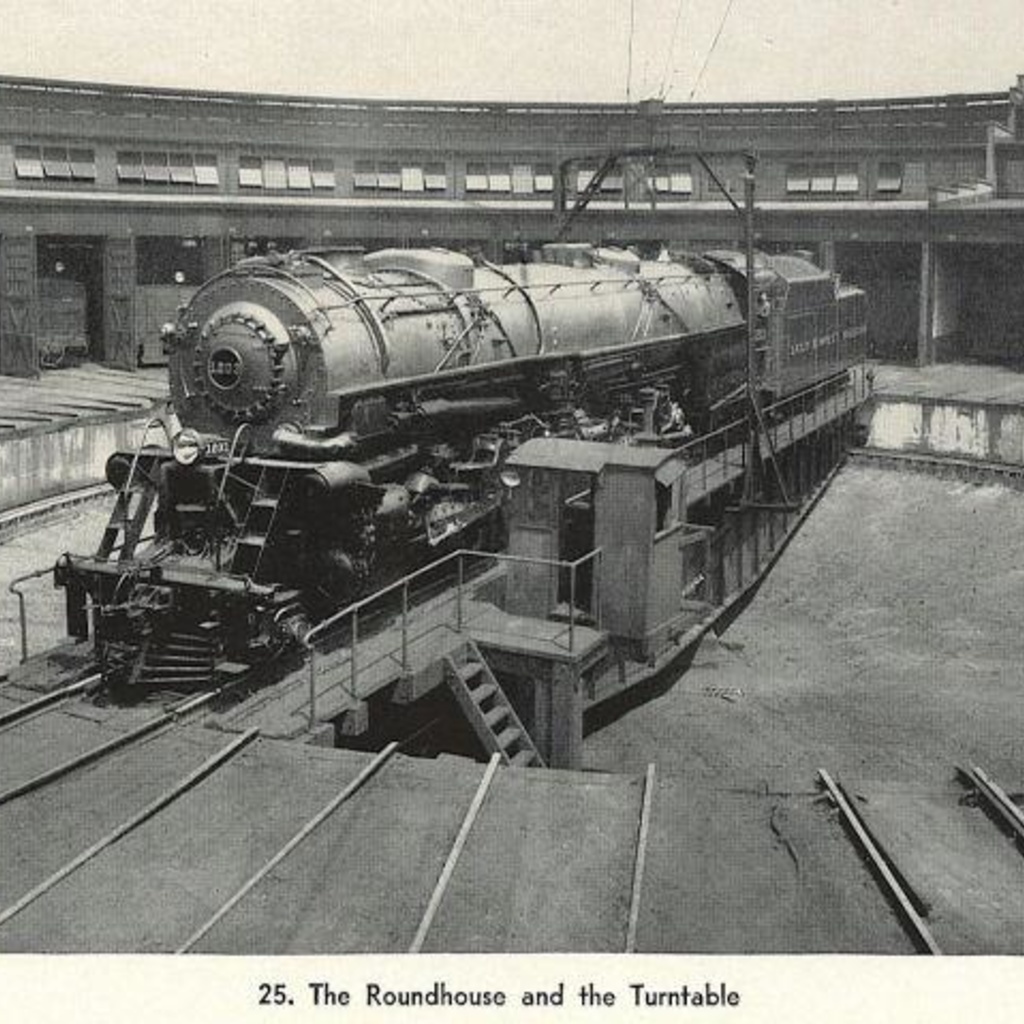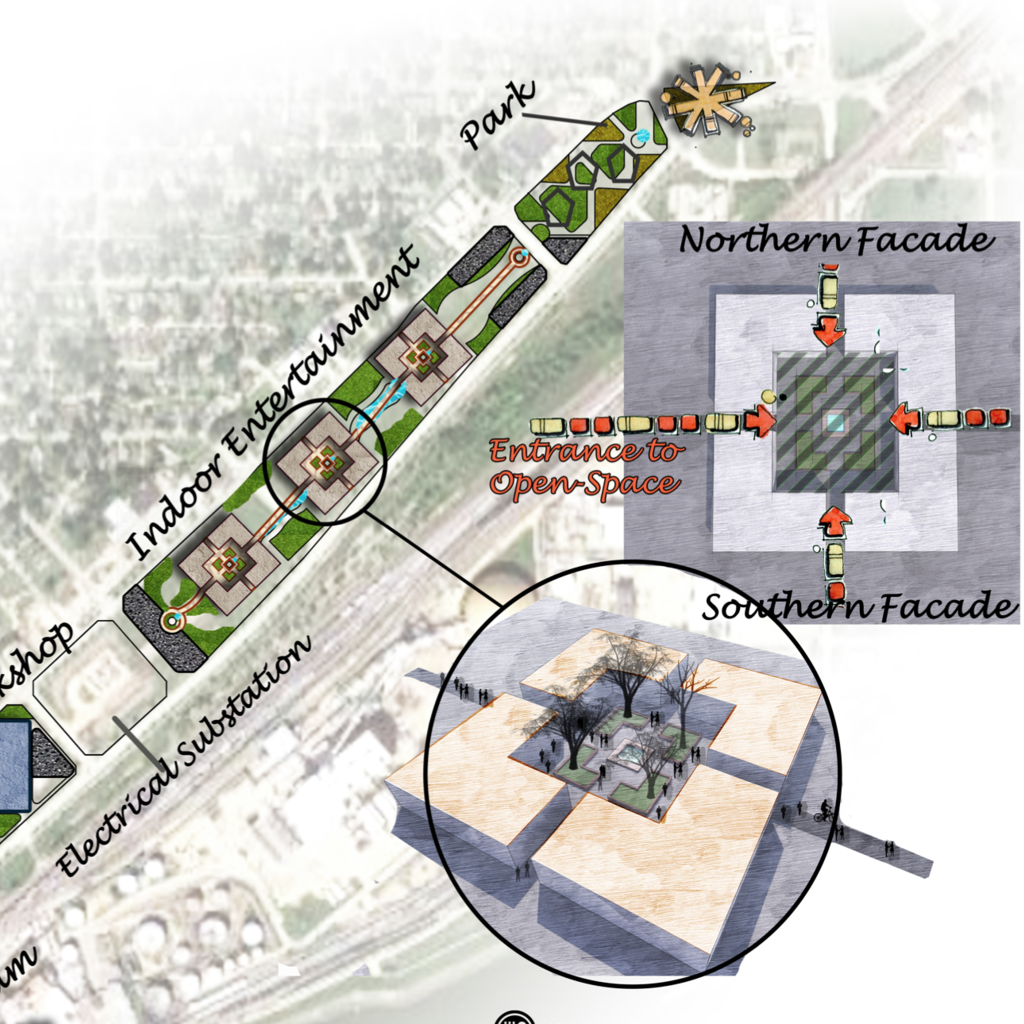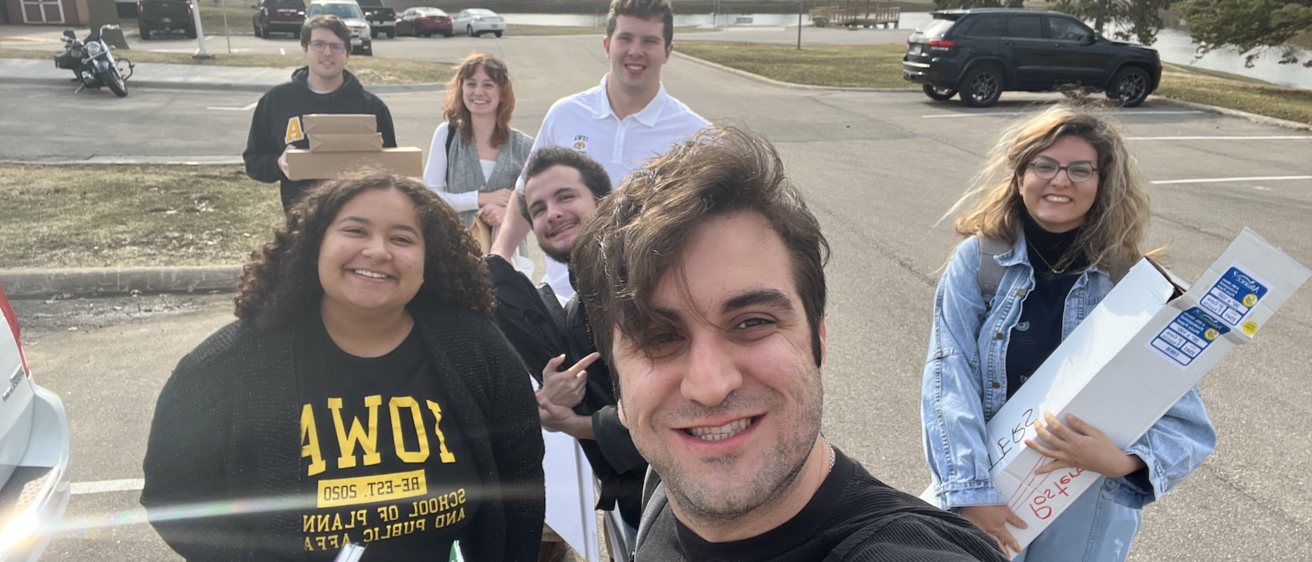Entering the city of Clinton from the west on Highway 30, one drives through an industrial section that is home to such economic anchors as Archer Daniels Midland (ADM). At one point, the road splits and an island of land exists between the multi-directional road. It is easy to miss since currently it’s undeveloped. The challenge put forth by the City to University of Iowa students was to consider a new life for this area.
After nearly two decades without any significant development, Clinton city officials want to evaluate previous land use plans and ordinances to encourage new uses and investment on the property. Dubbing it “Liberty Square,” they asked the students to provide plans for revitalizing the area as part of this year’s Iowa Initiative for Sustainable Communities’ partnership with the city on the eastern border of the state.
Former railroad hub's future as retail and community space
The team, which is comprised of five graduate students from the School of Planning and Public Affairs and the multidisciplinary Sustainable Development program, first visited the site in September. The possibilities and obstacles were immediately apparent. On one hand, it’s a great location that is highly visible and could serve as the entryway to the community. On the other, it is adjacent to the sprawling ADM facility, which brings high truck traffic into the area as well as foul odors.

A railroad also runs parallel to land. Previously, it was the site of a railcar repair shop. Starting in the late 1800s and far into the 20th century, Clinton was a hub for the railroad. The repair shops employed many people but also left behind toxic chemicals, which caused this particular site to be deemed a brownfield. After years of remediation, the area is awaiting a new purpose.
The IISC students held several community meetings to learn more about what people wanted from a new development. Several public engagement activities were led by planning student Emani Brinkman, who has accepted a job as a planner with the city of West Des Moines. “Public input is essential when proposing a redevelopment plan that best meets residents’ needs and has the buy-in and the support of the broad community,” she says. “Public input provided a starting point for identifying potential overlap between the public's needs and the city's vision for the project area.”
Public input guides conceptual process
Karen Rowan, Clinton’s city planner who served as the city’s liaison to IISC, worked closely with the students. “I loved that they were always seeking community engagement in their planning,” she says of the process. “I’ve lived here all my life, and the great questions from the students made me take a second look at how I was perceiving things.”
At the public meetings, people indicated a desire for more retail spaces, indoor recreation, play areas for kids, walkable gathering spaces, and green spaces. In response to these requests and the city’s request for economic development, the group came up with four concept designs.
Brady Hill, who is taking a job as a transportation planner in Louisville, KY, after graduation says spoke of the challenge of the site’s shape: “A main inhibitor for certain kinds of development is width. [Liberty Square] is a very elongated area. You can’t design it in square shapes, so that immediately got us out of our comfort zone.”
Final plan unveiled at May 4 event

The IISC students shared four concepts to city administrators and community members in March and are now fine tuning their recommendations based on the feedback they received. They’ll present a master plan for the area at the May 4 closing event for the IISC-Clinton partnership.
Among some of the most exciting elements of the concepts are sculpture-like solar trees that have solar panels in lieu of leaves, fountains, and courtyards. The latter element is common in Persian design, which reflects the Iranian origins of two of the team’s members. Sepehr Yadollahi, a planning student, explains the benefits of this design: “It puts stores and other features on the outside and builds an interior space that is quieter and more intimate.” The natural sound produced by the fountains also helps obscure the traffic noise inherent to the site.
The most ambitious of the concepts would redesignate the road to the north of the site for local traffic and the road to the south for industrial traffic. The team used real-time traffic data to model how it would work, including better options for safe crossings and the ability situate to shops and other amenities toward the local side. The option, which proved popular with residents, would necessitate taking over the northern roadway from the State since it is currently highway.
One of IISC’s central tenets is to provide hands-on learning opportunities for UI students while also serving the needs of Iowa communities. This has been a very successful project on both fronts. Reflecting on the experience, Hill says, “Our team has learned how to best balance differing opinions from different stakeholders. We’ve done events to gage what people want and need and often those ideas just naturally conflict. And then we have to go back to the goals and needs and reconcile it into one cohesive plan.”
The city is also thrilled with the creative and professional work it received from the students. “I would hire each and every one of them tomorrow—if the budget allowed!” said city manager Matt Brooke. “ They will all be a superb asset to wherever their adventure takes them next. I am looking forward to their final presentation and celebrating a truly successful endeavor.”
The Liberty Square Master Plan team is comprised of Brady Hill (M.S. in Urban and Regional Planning, Concentration: Transportation Planning; Sepehr Yadollahi (M.S. in Urban and Regional Planning, Concentration: Transportation Planning); Emani Brinkman (M.S. in Urban and Regional Planning, Concentration: Housing and Community Development); Emma Duncan (M.S. in Sustainable Development); Connor Johnson (M.S. in Sustainable Development); Steven Stilianos (M.S. in Sustainable Development); and Farnaz Fatahi Moghadam (M.S. in Urban and Regional Planning). With the exception of Moghadam, all team members are graduating this spring.
